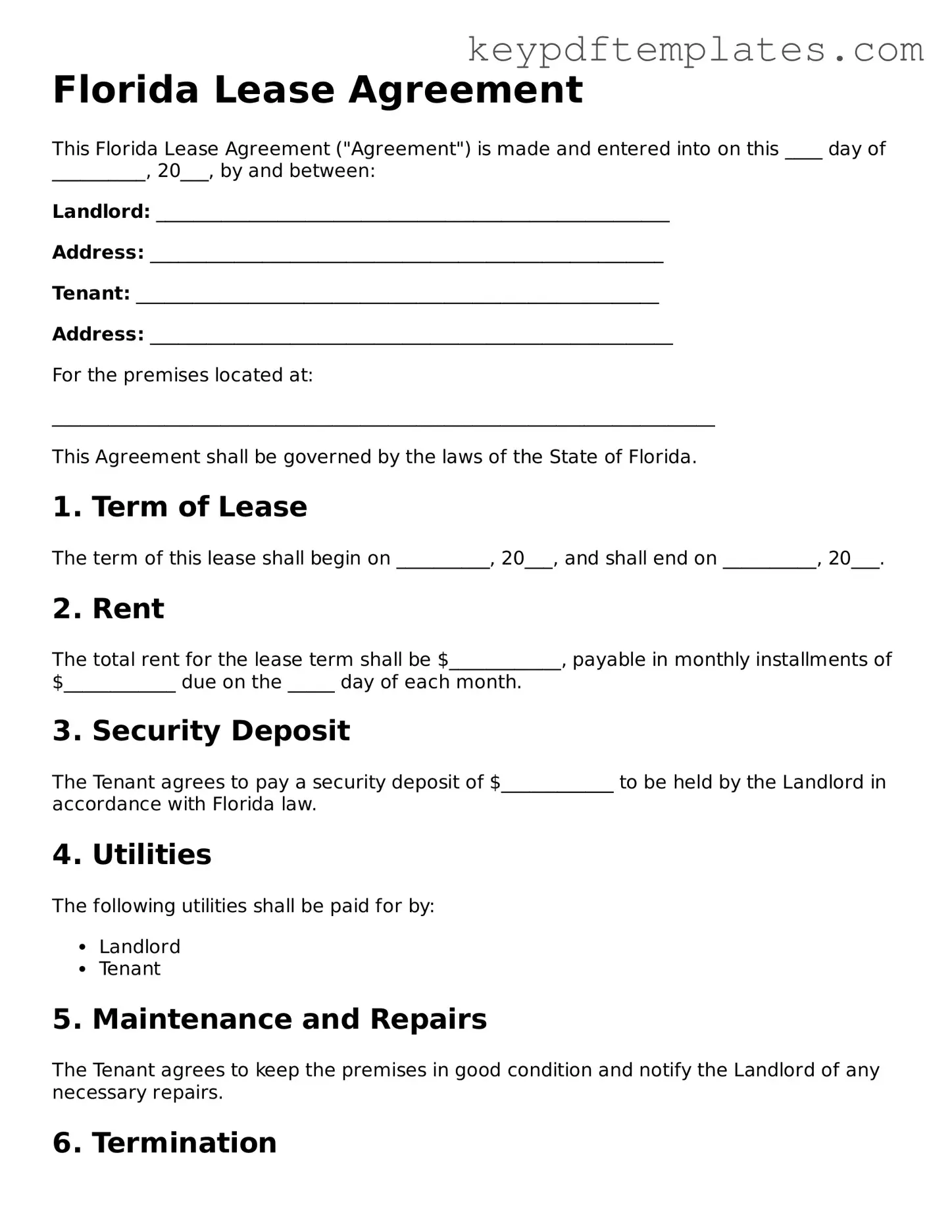Legal Lease Agreement Document for the State of Florida
A Florida Lease Agreement form is a legal document that outlines the terms and conditions between a landlord and tenant for renting residential or commercial property in Florida. This form ensures both parties understand their rights and responsibilities, helping to prevent disputes. By clearly defining the rental terms, the agreement serves as a vital tool for a successful landlord-tenant relationship.
Modify Document Online
